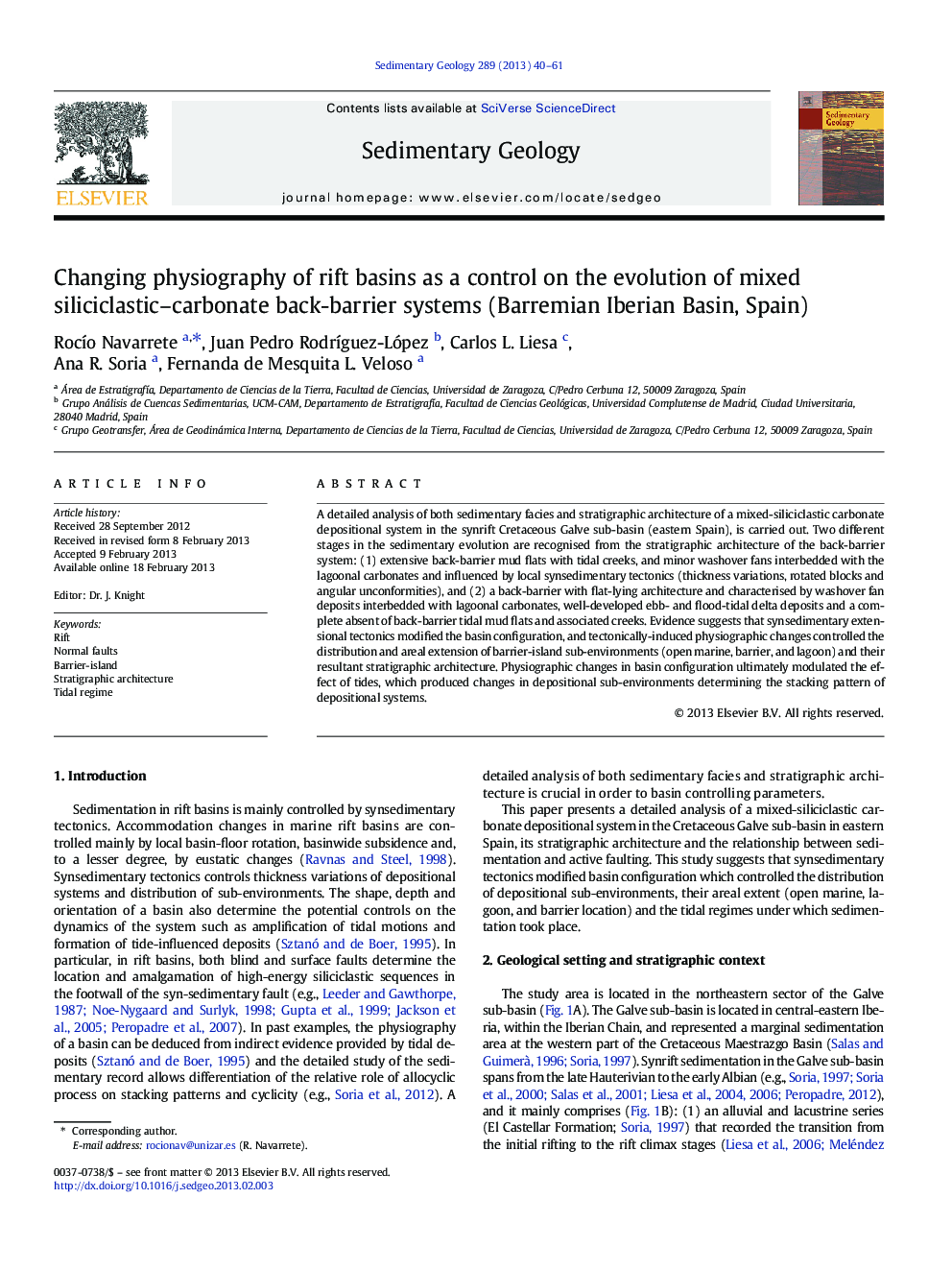| Article ID | Journal | Published Year | Pages | File Type |
|---|---|---|---|---|
| 4689584 | Sedimentary Geology | 2013 | 22 Pages |
A detailed analysis of both sedimentary facies and stratigraphic architecture of a mixed-siliciclastic carbonate depositional system in the synrift Cretaceous Galve sub-basin (eastern Spain), is carried out. Two different stages in the sedimentary evolution are recognised from the stratigraphic architecture of the back-barrier system: (1) extensive back-barrier mud flats with tidal creeks, and minor washover fans interbedded with the lagoonal carbonates and influenced by local synsedimentary tectonics (thickness variations, rotated blocks and angular unconformities), and (2) a back-barrier with flat-lying architecture and characterised by washover fan deposits interbedded with lagoonal carbonates, well-developed ebb- and flood-tidal delta deposits and a complete absent of back-barrier tidal mud flats and associated creeks. Evidence suggests that synsedimentary extensional tectonics modified the basin configuration, and tectonically-induced physiographic changes controlled the distribution and areal extension of barrier-island sub-environments (open marine, barrier, and lagoon) and their resultant stratigraphic architecture. Physiographic changes in basin configuration ultimately modulated the effect of tides, which produced changes in depositional sub-environments determining the stacking pattern of depositional systems.
